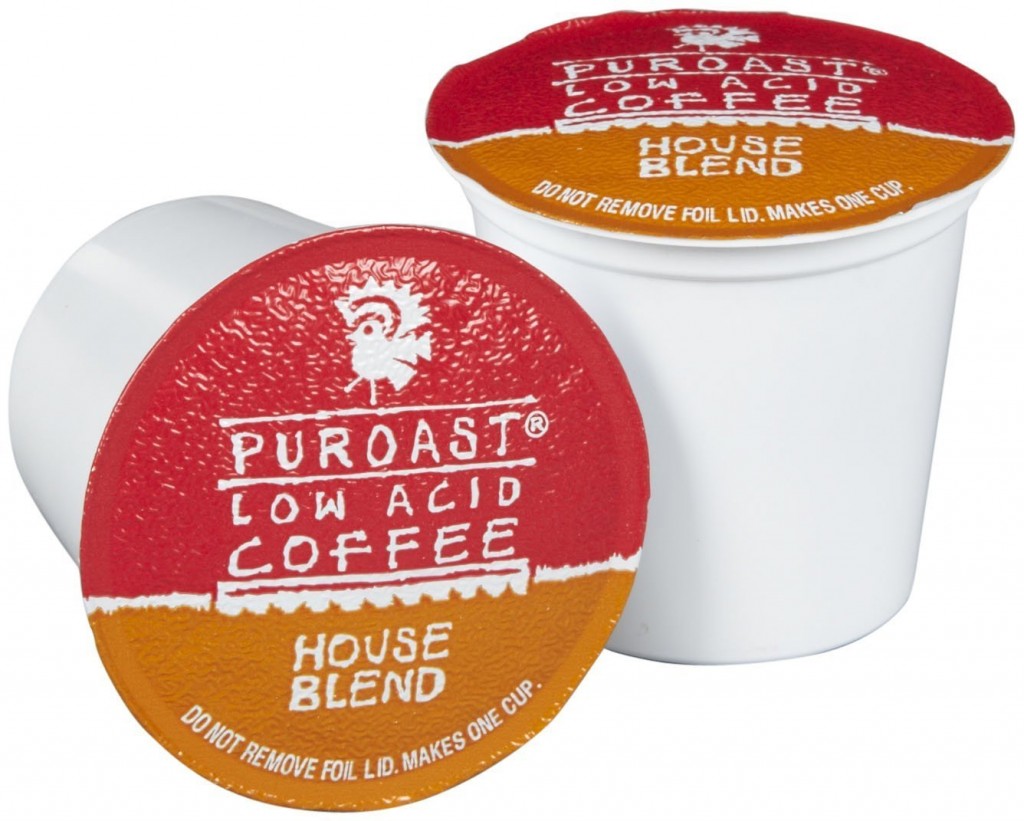Finally!! Low Acid K-Cups are now available.
We’ve all experienced the afternoon slump. 3 o’clock rolls around when the email hits your inbox with the red exclamation designating it as IMPORTANT. Lunch’s massive sub sandwich still sits heavy and half-digested as you struggle to keep your eyes open. You really just want to take a nap. But the critical assignment coming from the boss has to happen now. It’s time to stop refreshing the feed on Facebook and reading the same news headlines that haven’t changed since the morning lull, all while wondering how diligently the company monitors employees’ internet use (Hint: they are monitoring your internet use). Desperation is building and that’s when you know the only solution is an afternoon coffee.
In most offices these days that means heading over to the break room and firing up the Keurig coffee maker. A fantastic invention and truly an innovation from the days of terrible drip coffee machines that produced chalk-tasting coffee with the consistency of mud best served in a styrofoam cup. Some coffee snobs still complain about the taste of Keurig coffee, but mankind has made huge strides in the instant coffee category and we should celebrate. According to Keurig, there are now over 500 varieties and k-cup options now available, including many name brand favorites. Not to mention the cup is made fresh for personal consumption and has not been sitting in a stale pot for the past 45 minutes.
But most of those K-Cups are breakfast blends and medium roasts presenting people with sensitive stomachs the choice between a shot of caffeine at the expense of an upset stomach. A dilemma perhaps you have experienced first hand (I certainly have). So what to do when you need a quick boost to power through the afternoon but don’t want the acid reflux? Now introducing the option for K-Cups from low acid coffee makers trucup and Puroast.
Some coffee snobs think K-Cups are an abomination to the true taste of artisan coffee. I on the other hand think they’re fantastic and have one almost every afternoon at work. Even for people who might disagree with the taste or still prefer their take-out latte, one has to acknowledge Keurig and its K-Cup system for its convenience. The ease of the Keurig coffee machine and K-Cups is really unmatched and proves especially true in the workplace.
Lift the handle, drop in the K-Cup, push the button “brew” and voilà you have a cup of coffee ready to lift you through the afternoon’s many tasks.
Before zoning back into work mode, take a moment to enjoy the beautiful creation in front of you. It is always a lifting sensation when the last final drops of the coffee come sputtering out of the machine sending the familiar aromas wafting into the air. Anticipation shoots through your veins replicating the effect the caffeine will have when it hits your system. The warm afternoon cup of coffee filled near to the brim is there as the savior ready to lift you out of your afternoon dulldroms. Add a touch of cream and sugar or take it down as is, the first sip snaps you out of a state of procrastination and provides you enough energy to carry on.
A new sense of purpose fills you on the way back to your desk. All previous fears and insecurities melt away. This time you don’t even bother to take the long way back to avoid the overbearing manager, you cruise right by him with the look in your eye that says “Don’t even ask, I’m getting it done”. You sit back down your back a little straighter, hands perched above the keyboard ready to strike, and it begins.
of purpose fills you on the way back to your desk. All previous fears and insecurities melt away. This time you don’t even bother to take the long way back to avoid the overbearing manager, you cruise right by him with the look in your eye that says “Don’t even ask, I’m getting it done”. You sit back down your back a little straighter, hands perched above the keyboard ready to strike, and it begins.
So fear not, you low acid coffee drinkers who previously could not experience the convenience of the K-Cup. Because now we are no longer blocked and discriminated from the beautiful convenient world of Keurig coffee makers. Grab yourself a low acid coffee K-Cup today and know that they are there for you at any time of the day, but most importantly for the afternoon pick me up.



